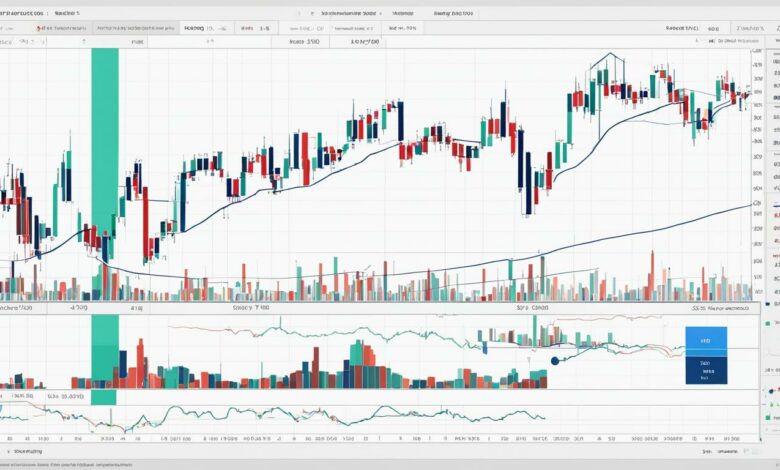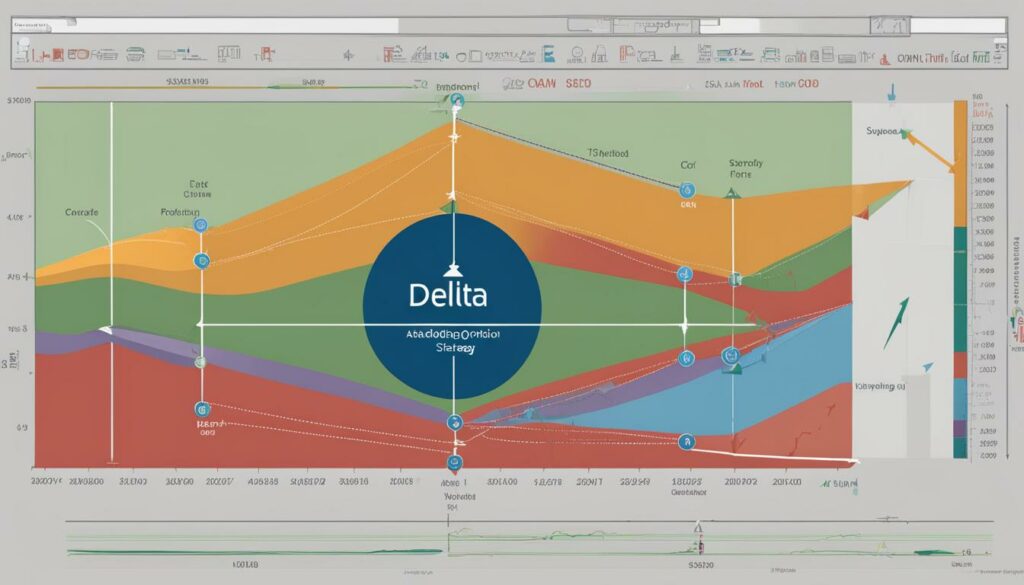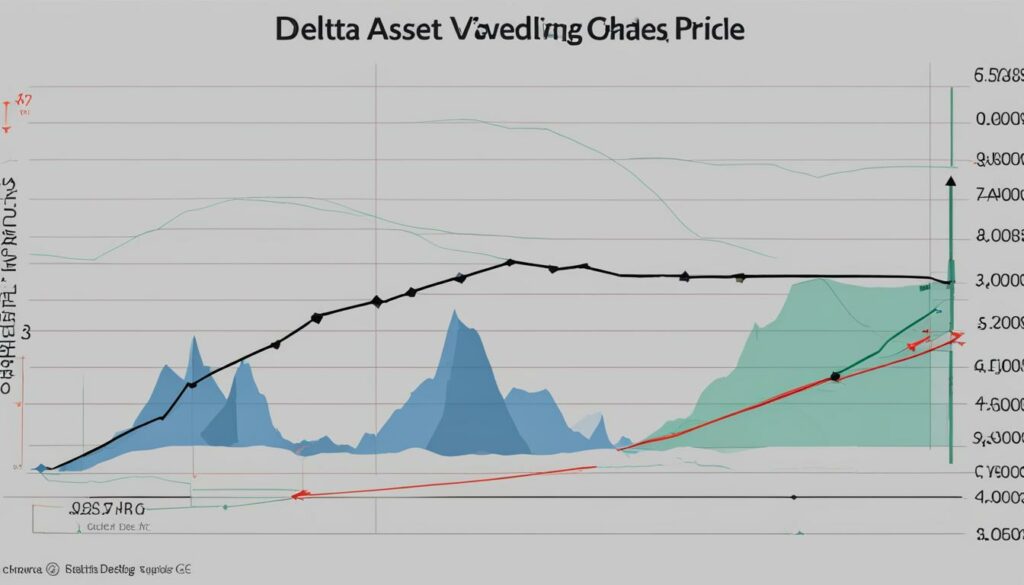Using Delta Hedging with Straddle Options: How It Works

Delta hedging is an options trading strategy that aims to reduce the directional risk associated with price movements in the underlying asset. It involves establishing offsetting long and short positions in the same underlying asset to achieve a delta-neutral state. The strategy uses options, such as straddle options, to hedge against price volatility and maintain a market-neutral position. Delta hedging can be beneficial for traders who anticipate strong movements in the underlying stock but require constant monitoring and adjustments to the positions involved.
Key Takeaways:
- Delta hedging is an options trading strategy that reduces directional risk.
- It involves establishing offsetting long and short positions in the same underlying asset.
- Straddle options are commonly used to hedge against price volatility.
What is Delta Hedging?
Delta hedging is a risk management technique used by options traders to hedge against price changes in the underlying stock. The delta of an options position represents the sensitivity of the options value to changes in the stock price. By trading the underlying stock, options traders can adjust the position’s delta and reduce the directional risk of the options strategy.
To understand delta hedging, let’s consider an example. Suppose you have a call option on a stock with a delta of 0.5. This means that for every $1 increase in the stock price, the options value will increase by $0.5. To delta hedge the position, you would need to sell short 0.5 shares of the underlying stock, which neutralizes the delta of the call option. In this delta-neutral position, the options value remains relatively unaffected by small changes in the stock price.
The delta of an options position changes with the stock price movements, making delta hedging crucial for risk management. By continuously adjusting the stock position to maintain delta neutrality, options traders can hedge against the price changes of the underlying stock, reducing their risk exposure. Delta hedging requires a thorough understanding of the options greeks, such as delta, to effectively manage the risk of options positions.

Recap: Exploring Straddle Options
Now that we have a solid understanding of delta hedging, let’s explore another options strategy, straddle options. Straddle options involve the simultaneous purchase of a call option and a put option on the same underlying asset, with the same strike price and expiration date. This strategy allows traders to benefit from significant price movements, regardless of the price direction. Straddle options are particularly popular in volatile markets, where they provide an opportunity to profit from price volatility.
What are Straddle Options?
Straddle options are a versatile strategy that allows traders to capitalize on price volatility of the underlying asset. A straddle position consists of buying an at-the-money call option and an at-the-money put option with the same expiration date and strike price. The at-the-money strike price is the price at which the underlying asset’s current price is equal to the strike price of the options.
There are two types of straddle options: the long straddle and the short straddle. A long straddle involves buying both the call and put options, while a short straddle involves selling both options. The long straddle benefits from substantial price movements in either direction, while the short straddle profits when the price of the underlying asset remains relatively stable.
Straddle options offer traders the potential for significant payoff if the underlying asset experiences substantial price moves. This strategy is particularly attractive in volatile markets, where price fluctuations are more likely to occur. Traders can incorporate straddle options into their trading strategies to hedge against uncertainty and profit from price volatility, independent of the stock price direction.
The Intersection of Delta Hedging and Straddle Options
Now that we have explored the concepts of delta hedging and straddle options, let’s understand how these strategies can intersect and complement each other in options trading.
The Strategy
The strategy of combining delta hedging with straddle options involves using delta hedging to manage the directional risk of the straddle options position, aiming to neutralize the position’s delta. Delta hedging the straddle position allows traders to reduce the impact of underlying stock price movements, enhancing risk management.
Implementing the strategy requires continuous monitoring and adjustments to maintain the delta neutrality of the straddle options position. Traders need to actively manage the total delta of the position, which is the combined delta of the call and put options. By delta hedging the straddle position, traders aim to neutralize the directional risk, ensuring that the options value changes in relation to the underlying stock price.
Practical Examples
Practical examples can help illustrate the intersection of delta hedging and straddle options. Let’s consider a scenario where an options trader holds a straddle position on a stock with a strike price of $50, an expiration date of one month, and the underlying stock trading at $50. Here are the key elements of the example:
- Strike price: $50
- Underlying asset: Stock XYZ
- Initial stock price: $50
- Call option delta: 0.5, put option delta: -0.5 (at the money options)
- Position delta: 0 (delta neutral)
The stock price moves up by $2:
- Call option delta becomes positive, put option delta remains negative.
- To maintain delta neutrality, the trader sells short the underlying stock, reducing the position’s delta.
- The trader realizes a profit from the increase in the call option value, offsetting the loss in the put option value.
The stock price moves down by $2:
- Call option delta remains positive, put option delta becomes less negative.
- To maintain delta neutrality, the trader buys shares of the underlying stock, increasing the position delta.
- The trader realizes a profit from the increase in the put option value, offsetting the loss in the call option value.
How Does Delta Hedging Work?
Delta hedging is a key options trading strategy that aims to minimize risk and maintain a delta-neutral position. The strategy relies on the concept of delta, which measures the sensitivity of an options contract’s price to changes in the underlying asset’s market price.
The delta of an option represents the change in its value relative to the movement in the market price of the underlying asset. A delta of 1 means the option price will move in tandem with the underlying asset, while a delta of -1 means the option price will move inversely to the underlying asset.
To execute delta hedging, a trader adjusts the hedge ratio by buying or selling shares of the underlying stock or options with opposite deltas. The hedge ratio determines the number of shares or options required to offset the price movements of the underlying asset.
Determining the appropriate hedge ratio requires careful analysis and monitoring. Factors such as the option’s time to expiration, implied volatility, and the underlying asset’s price changes can influence the hedge ratio.
Delta hedging is especially effective in volatile markets, as options tend to exhibit larger price movements compared to the underlying asset. By adjusting the hedge ratio and maintaining a delta-neutral position, traders can isolate volatility changes and protect against adverse price movements.
Calculating the Hedge Ratio
The hedge ratio determines the number of shares or options required to offset the price movements of the underlying asset. It is calculated by dividing the delta of the options position by the delta of the underlying asset.
The hedge ratio formula is as follows:
| Hedge Ratio | = | Delta of Options Position | / | Delta of Underlying Asset |
|---|
For instance, if the delta of the options position is 0.5 and the delta of the underlying asset is 0.8, the hedge ratio would be 0.5/0.8 = 0.625.

By adjusting the hedge ratio, traders can maintain a delta-neutral position and mitigate the potential impact of price movements in the underlying asset. This allows them to focus on capturing profit from volatility changes rather than being exposed to directional risk.
Advantages and Disadvantages of Delta Hedging
Delta hedging is an options strategy widely used by traders to manage risk and protect their portfolios. Like any trading approach, delta hedging has both advantages and disadvantages that traders should consider.
Advantages of Delta Hedging
- Protection against adverse price changes: Delta hedging helps protect a portfolio against unfavorable price movements in the underlying asset. By maintaining a delta-neutral position, traders can minimize potential losses and maintain stability in their holdings.
- Preservation of profits: Delta hedging allows traders to preserve profits from options or stock positions in the short term. By offsetting the directional risk, traders can lock in gains and reduce the impact of price fluctuations.
- Effective risk management: Delta hedging is an effective risk management strategy, especially in volatile markets. It allows traders to isolate volatility changes and protect against adverse price movements, reducing the overall risk exposure of their portfolio.
Disadvantages of Delta Hedging
- Higher trading costs: Delta hedging involves frequent adjustments and transactions, which can result in higher trading costs. These costs include transaction fees and other expenses that traders need to consider when implementing the strategy.
- Impact on time value: Options used in delta hedging can lose time value over time. As the expiration date approaches, the time value component of the options decreases, affecting the premium cost. Traders may need to adjust their delta hedging strategy to maintain a delta-neutral position as the time value diminishes.
Despite these disadvantages, delta hedging remains a popular strategy among options traders due to its risk management benefits. Traders should carefully weigh the advantages and disadvantages and consider their trading goals and market conditions before implementing delta hedging strategies.

| Advantages | Disadvantages |
|---|---|
| Protection against adverse price changes | Higher trading costs |
| Preservation of profits | Impact on time value |
| Effective risk management |
How Effective is Delta Hedging when using Straddle Options?
Evaluating the effectiveness of delta hedging with straddle options is crucial for options traders. The effectiveness of the strategy depends on various factors, including the trader’s risk tolerance, market conditions, and the goals of the hedging strategy.
Delta hedging can be an effective strategy when used in conjunction with straddle options, particularly in markets with high volatility. This approach allows traders to hedge directional risk while positioning themselves to benefit from price moves. Whether the trader seeks long volatility or short volatility, delta hedging with straddle options provides a comprehensive approach to risk management.
Conclusion
In conclusion, delta hedging with straddle options is a sophisticated strategy that can help manage risk and potentially increase returns in trading. By combining the concepts of delta hedging and straddle options, investors can achieve market neutrality and mitigate the impact of price fluctuations. However, it is important to note that this strategy requires constant monitoring and adjustments to positions, which can be time-consuming and may require a high level of expertise. When implemented correctly, delta hedging with straddle options can be an effective tool for traders looking to navigate volatile markets. It is always recommended to consult with a financial advisor or professional before incorporating this strategy into your trading plan.







